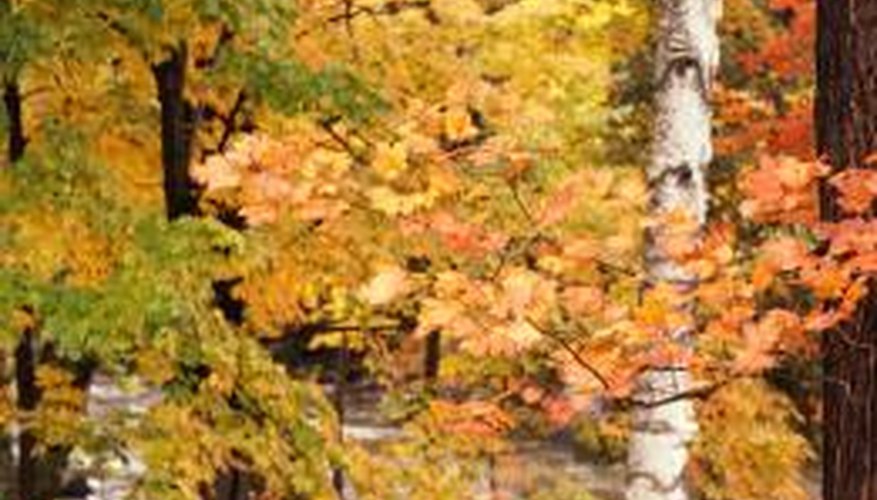Tall, slender and brilliant white, the silver birch -- also called the European white birch -- is thriving in the United States. You can recognise it by the dark, diamond fissures that develop on the bark as it ages.
Description
Although the "Lady of the Woods" looks delicate with its slim trunk, pale bark and delicate leaves, the tree is tough and hardy. Silver birches grow anywhere from old building sites to mountaintops and are among the early pioneer trees to colonise a burnt-out area.
Growth
Silver birches grow rapidly, attaining 40 feet in 20 years. Propagated by seeds or cuttings, this birch reaches maturity at 40 years, much faster than an oak that takes several centuries. The fast-growing, wide-ranging species needs no federal protection.
- Tall, slender and brilliant white, the silver birch -- also called the European white birch -- is thriving in the United States.
- Propagated by seeds or cuttings, this birch reaches maturity at 40 years, much faster than an oak that takes several centuries.
Enemies
Although the silver birch is not protected, it does have insect enemies. It is so vulnerable to birch leafminer and bronze birch borer that the U.S. Forest Service recommends against selecting it as a landscape tree.
